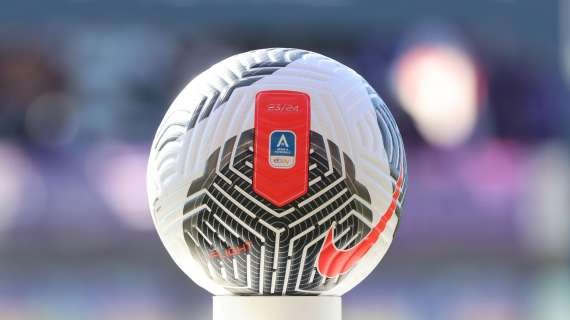Splashing Cash in Football: Does More Spending Equal More Success?
TRANSFERmarketWEB.com
Does spending more money lead to better results? For years, particularly in football, this has been the prevailing belief. Consequently, those with greater financial resources haven't hesitated to invest. However, it's not always the case that the outcomes align with this notion. Why? It's straightforward... spending more, at least over the past 5 years, doesn't necessarily translate to greater success. While the timing and destination of expenditure are always relevant factors, let's delve deeper. The CIES has released a study specifically focusing on market expenditures. They sought to compile a ranking of teams that have invested over 100 million euros in the market over the last 5 years.
Among the 169 teams analyzed, surprisingly, 30 are English, with an additional 5 from outside Europe. Yet, these numerical figures aren't our primary focus. More intriguingly, 14 teams have surpassed the billion-euro mark in spending during the last 5 years. Among these are 5 English clubs (Chelsea, both Manchester teams, Tottenham, and Arsenal), two Spanish (Real Madrid and Barcelona), two German (Bayern Munich and RB Leipzig), two Italian (Juventus and Inter Milan), as well as PSG and Benfica. To grasp the distinctions, consider that Inter ranks 14th in this list, having spent 1 billion and 25 million euros, while Chelsea claims the top spot with over 2.5 billion euros splurged in the market.
Of these teams, how many have achieved significant success in the last 5 years, and to what extent? Not all, and not consistently. Some have achieved little, while others, nothing at all. One might argue that some clubs had a head start due to their pre-existing financial position. While true, a deeper analysis over the past 10 seasons, factoring in the balance between income and expenditure, reveals stark disparities. Teams with the most unfavorable balances include Manchester United (-1.350 billion euros) and Chelsea (-1 billion), followed by PSG (-959 million), Arsenal (-867 million), and Manchester City (-862 million). Notably, the figures for the two Italian clubs differ significantly, with Juventus at -449 million and Inter at -246 million. These figures also shed light on the financial nature of these clubs; among the top 14, some have generated significant revenues rather than merely spending, exemplified by Benfica (+732 million) and Ajax (+434 million).
The narrative remains consistent when considering the last 5 seasons, with Chelsea (-782 million), Manchester United (-773 million), and Arsenal (-867 million) leading the pack. PSG's spending has reduced, with Ajax and Benfica still on top in terms of earnings. Notably, Inter has managed to break even in the last 5 years, a trend also observed in RB Leipzig.
This trend reversal is evident this year, for instance, in Juventus, which have achieved a slightly positive balance. Thus, it's inaccurate to assume that higher spending equates to better outcomes. Not only is success not guaranteed, but upon closer examination, it's evident that many investments fail to yield returns, posing a significant challenge. Continuously spending large sums, as seen with clubs like Chelsea or Manchester United, while perpetuating a deficit, is precarious, fostering a negative cycle detrimental to financial stability.
In Serie A, including Inter and Juventus, their financial conduct in recent years warrants attention. Much discussion revolves around Inter's squad costs compared to their rivals (Juventus, Milan, and Roma), alongside wage expenditures, especially given the growing significance of free agents. Perhaps insights from this study could provide some answers.
Meanwhile, the investment ranking in the market aligns with expectations, with Juventus and Inter leading the pack (1.298 billion euros for the Bianconeri, 1.025 billion for Inter). Atalanta (928 million), Napoli (863 million), Roma (667 million), Milan (665 million), and Sassuolo (628 million) follow suit before Fiorentina (614 million). Bologna marks a significant leap, having spent 381 million euros over 5 years.
The balance over the last 10 seasons is noteworthy, with Milan (-561 million euros) leading the negative trend, followed by Juventus (-449 million) and Inter (-246 million), with Napoli (-200 million) trailing. Interestingly, Parma and even Monza show negative balances over the last decade, while Roma maintains a steady position around zero.
The highest earners over the past decade include Atalanta (233 million) and Udinese (202 million). However, the ranking shifts in the last 5 years, with Juventus (-220 million) surpassing Milan (-205 million), while Napoli remains third (-138 million). Inter, despite spending 1.025 billion euros, lands around the mid-table with a nearly balanced budget. This underscores the importance of sustainable market activities.
Sassuolo emerges as the top earner in the 5-year ranking, with a positive balance of +132 million. In summary, scrutinizing the last 5 years of the transfer market alongside financial records and trophy cabinets of Italian teams prompts a reassessment of the adage that more spending leads to better outcomes. It's far from certain, emphasizing the necessity of incorporating sales strategies...
condividi tweet
Source: transfermarketweb.com


Comments
This article has 0 comment(s) , give your comment